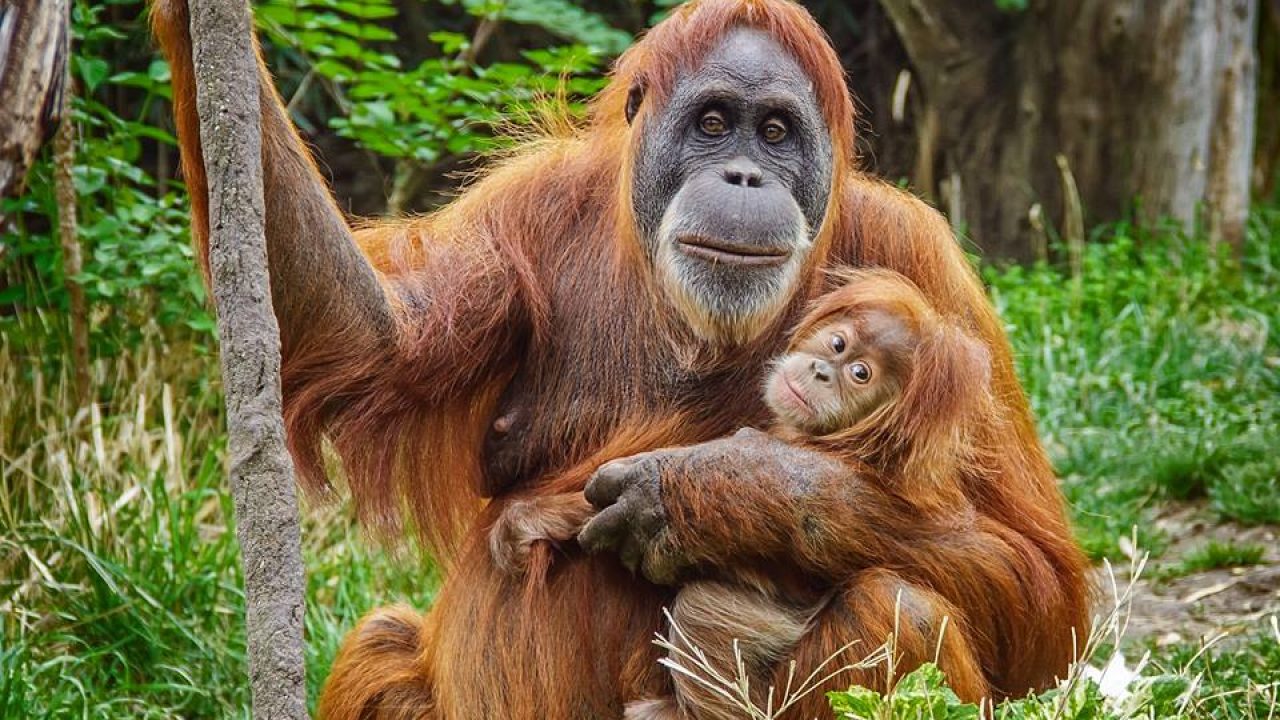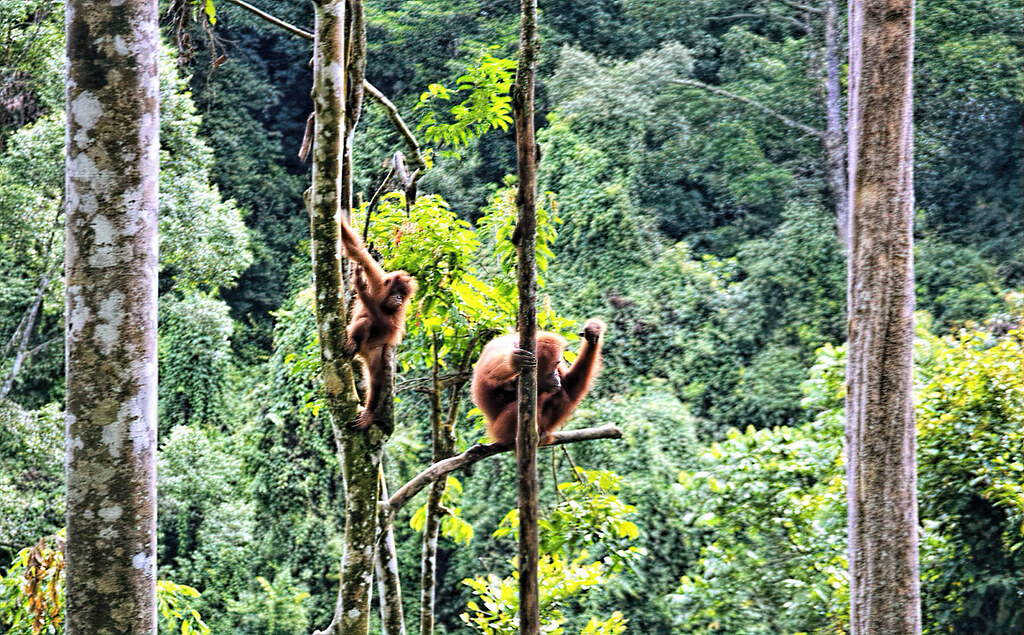The 2.5 million hectare Tropical Rainforest Heritage of Sumatra site comprises three national parks: Gunung Leuser National Park, Kerinci Seblat National Park and Bukit Barisan Selatan National Park.
The site holds the greatest potential for long-term conservation of the distinctive and diverse biota of Sumatra, including many endangered species. The protected area is home to an estimated 10,000 plant species, including 17 endemic genera; more than 200 mammal species; and some 580 bird species of which 465 are resident and 21 are endemic. Of the mammal species, 22 are Asian, not found elsewhere in the archipelago and 15 are confined to the Indonesian region, including the endemic Sumatran orang-utan. The site also provides biogeographic evidence of the evolution of the island.

The two species of orangutan, Bornean and Sumatran, differ slightly in appearance and behavior. While both have shaggy reddish fur, Sumatran orangutans have longer facial hair and seem to have closer social bonds than their Bornean cousins. Bornean orangutans are more likely to descend from trees on occasion and move around on the ground.
The Sumatran orangutan is almost exclusively arboreal, living among the trees of tropical rainforests. Females virtually never travel on the ground and adult males do so rarely. Sumatran orangutans are reported to have closer social ties than their Bornean cousins. This has been attributed to mass fruit on fig trees, where groups of Sumatran orangutans can come together to feed. Adult males are typically solitary while females are accompanied by offspring.
Historically, the Sumatran orangutan was distributed over the entire island of Sumatra and further south into Java. The species’ range is now restricted to the north of the island with a majority in the provinces of North Sumatra and Aceh. Of the nine existing populations of Sumatran orangutans, only seven have prospects of long-term viability, each with an estimated 250 or more individuals. Only three populations contain more than 1,000 orangutans. Orangutans that were confiscated from the illegal trade or as pets are being reintroduced to Bukit Tigapuluh National Park. They number around 70 and are reproducing.

Asia’s only great apes are threatened by rapid deforestation and devastation of their habitat, mainly due to palm and other agricultural plantations. Young orangutans, in particular, are also imperiled by the illegal pet trade and mothers often killed as poachers snatch their young.
The Bornean orangutan is listed as Endangered and numbers approximately 41,000, while the Sumatran orangutan is considered Critically Endangered with an estimated population of 7,500. A century ago, more than 230,000 orangutans likely roamed in the wild.
Adult orangutans are solitary by nature but mothers stay with their young for up to eight years—longer than any other great ape.
Fruit makes up about 60% of the orangutan’s diet, including lychees, mangosteens, mangoes and figs. They also eat young leaves and shoots, insects, soil, tree bark, and occasionally eggs and small vertebrates. Water comes from fruit as well as tree holes.
According to worldwildlife.org and whc.unesco.org














